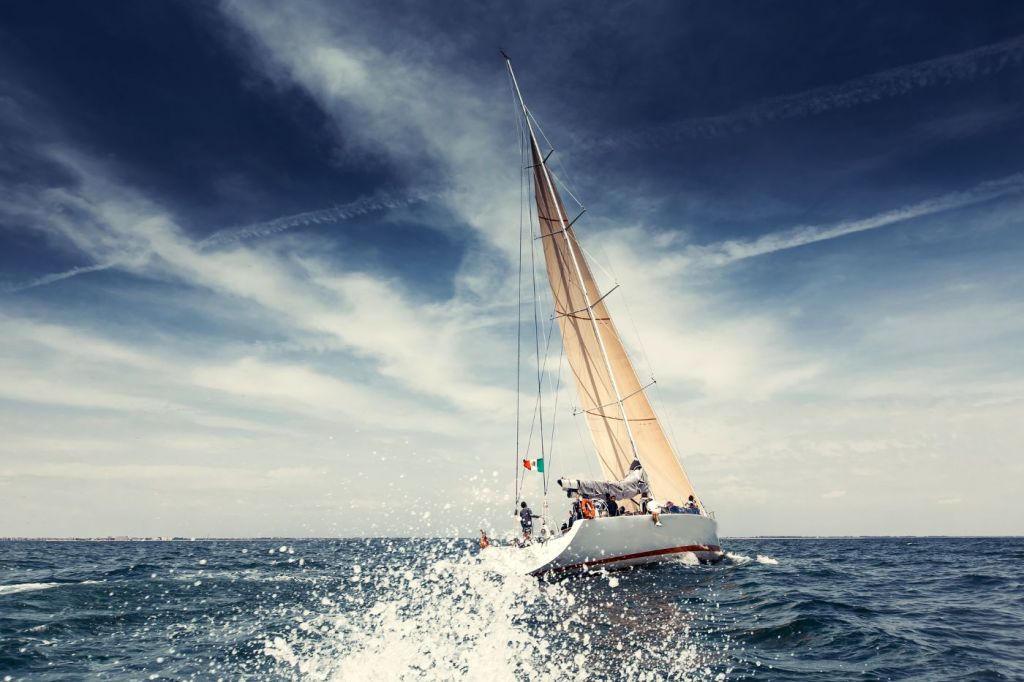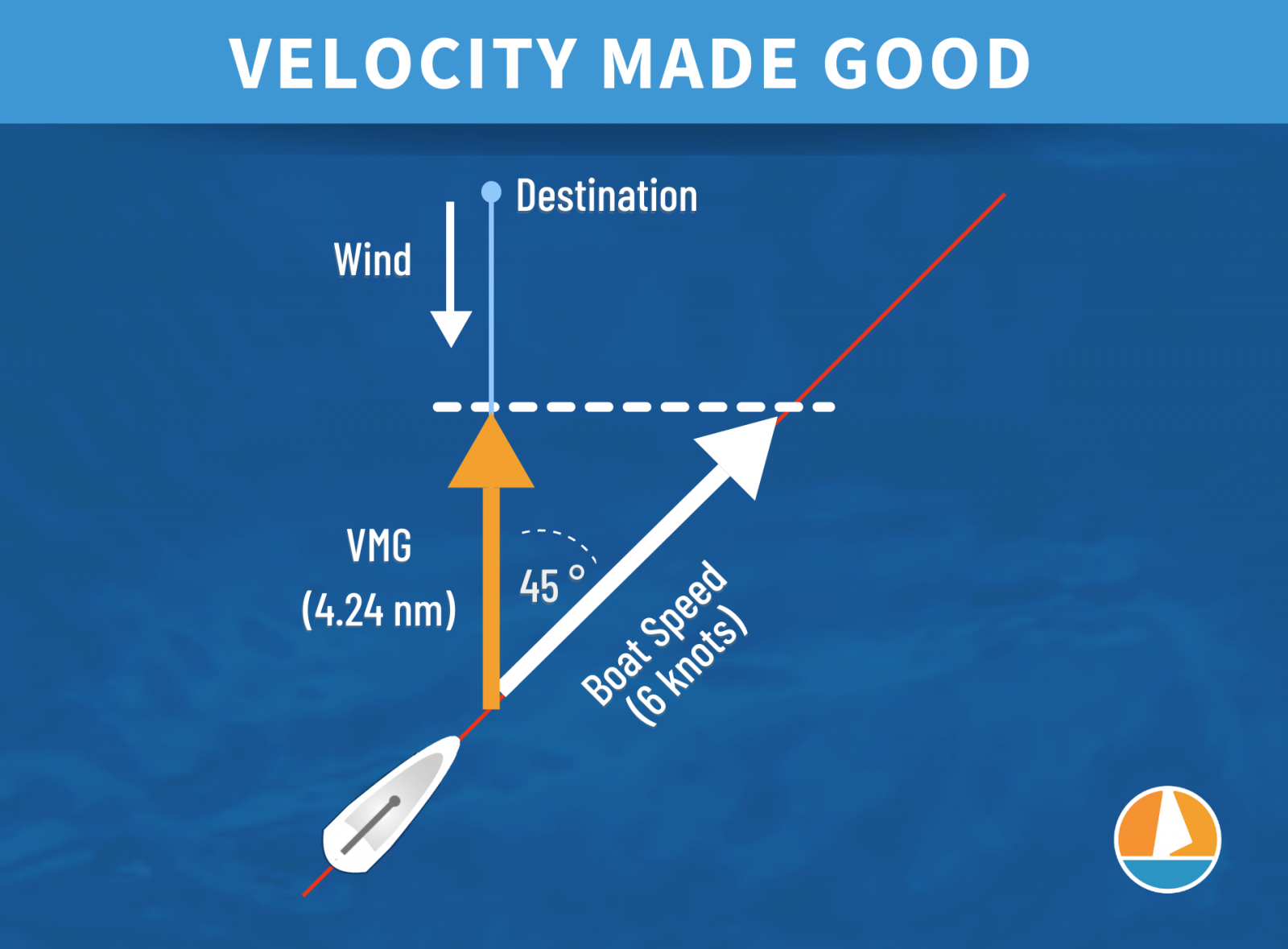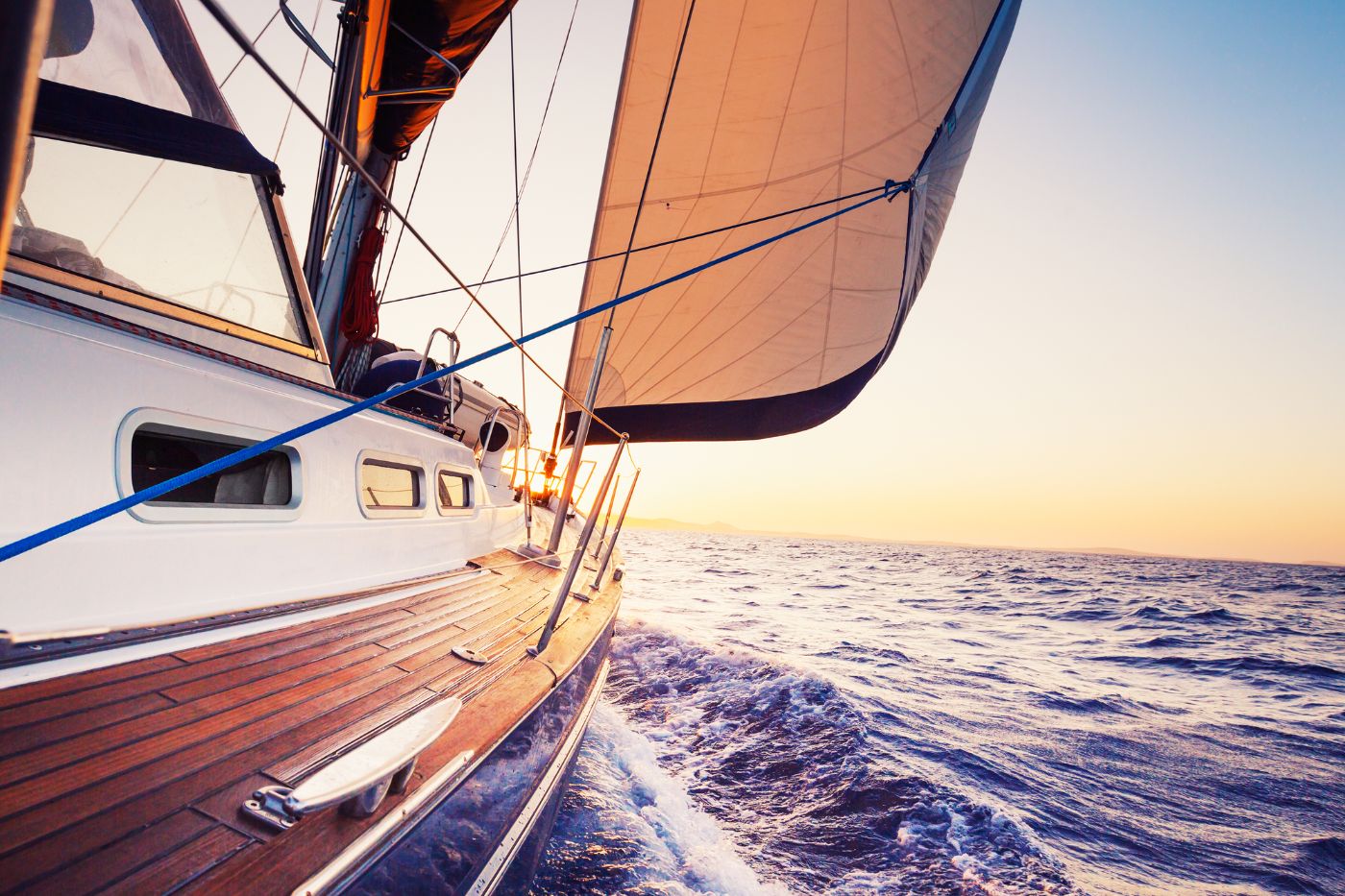What Is the Fastest Point of Sail? (Comfortable & Efficient)
Modern boats can sail quite close to the wind all the way off the wind. But sailing angle is usually related to where you're trying to sail to - the next waypoint in your route, the windward mark in a regatta, or back to your home marina.
But what about when you're just out for a day sail and just want to go fast? The fastest point of sail for most boats is a beam reach, with the true wind directly on the beam of the boat. For light boats that can plane, this point may be a little behind a beam reach. Or a little ahead of it on a close reach for heavier boats. But reaching is faster than any other point of sail.

How Wind Affects the Sailing Experience
Sailing upwind, downwind, and across the wind all feel quite different, with big changes in apparent wind, heeling and boat movement. The same 15 knots of breeze on a beat to windward means lots of heeling and splashing and wind, while the same wind on a dead downwind run barely cools your sweat and starts people peeling off layers. But often you're moving at close to the same speed, or making the same amount of progress to your destination.

The different types of sailing speed
When talking about "fast" when sailing, there are several ways to think about it.
- Speed through the water. Often abbreviated STW or referred to as boat speed.
- Speed made good, which is progress made towards a specific point or direction. Instruments may show this as VMG (Velocity Made Good) or CMG (Course Made Good) or other abbreviations. This is only relevant if you're sailing somewhere specific. If you're sailing around for a speed rush with no destination, you care little about progress!
- Speed over Ground. This is the speed the boat makes over the bottom, and may differ from boat speed with current or leeway. If you sail 6 knots through the water straight into a 1 knot current, your SOG will be 5 knots as the current pushes you back. While Speed Over Ground is useful for checking current effects, it has little to do with boat trim or performance, so it's not that important to our discussion.
Your boat speed is how fast you are moving through the water, and it's an excellent measure of how good your sail and boat trim are. But it's not always the best measure of progress towards a destination, since you can't always sail straight at your point.
If you sail for an hour on a beat at six knots towards a buoy six miles dead upwind, you won't reach the mark. You'll have sailed about a 45 degree angle away from the buoy, and you'll need to tack back to get to the mark. Without getting into too much geometry, the speed made good towards the mark is the component of your speed that is traveling closer to the mark on each tack.
The diagram below shows the made good arrow - how much closer to your mark you got - for that hour of sailing. Sailing 45 degrees of the wind at six knots means you moved about 4.25 miles closer upwind.

Identifying the fastest point of sail
Sometimes the fastest point of sailing is not just the boat speed, it's the speed made good. From a made good perspective, sailing 45 degrees off the wind at 6 knots is "slower" than sailing dead downwind but straight at the mark at 5 knots. And therefore upwind sailing often feels fastest but isn't always as fast as off the wind sailing.
There's no real "fastest" point of sail for all conditions, because all boats behave differently in different conditions. A boat that is faster on a close reach in light air may be faster on a beam reach in heavier breeze. And a light boat with a big asymmetrical spinnaker that can get up in plane will be much faster on a broad reach in heavy wind than any other point of sail in lighter air.
Where does this leave is with our "fastest" point of sail? For most boats, it's still clustered within 20° or so around a beam reach with the true wind 90° off the boat. Not only do you usually have the highest boat speed, when you can reach it also means you can point right at the next waypoint. So your speed made good is 100% of your boat speed...very "fast."

Achieving comfortable sailing speed
The different points of sail have very different feels, and what is most comfortable is a matter of preference. Most of the comfort factors relate to apparent wind and how the boat acts. Upwind, there's lots of heeling and apparent wind. Down wind, the wind is much lighter, but you have to concentrate to avoid jibes and if you fly spinnakers, it's a lot more fussy to set, trim and douse. And on a hot day with light air, downwind sailing can get quite warm without all that apparent wind.
But many view beam reaching as the most comfortable point of sail and the fastest. Why? It doesn't have all the heeling and breeze of going upwind. And it doesn't have the work of going downwind, or the warmth of the light apparent winds. You set the sails, point at the next mark, and enjoy straight-line speed with very little effort.
Factors Affecting Sailing Speed
Earlier, I mentioned I wouldn't get into math, but that was a different heading. We can't get into why reaching is fast without talking about the forces on a boat. And that takes some force arrows, or vectors. A vector is a combination of a scalar number with a direction, and when force vectors meet, they add and subtract to combine for a total force or movement in one direction.
The forces which combine to make a boat move include:
- Lift from wind moving over the sails.
- Force from wind pushing on the sails.
- Resistant force from the keel pushing against the water as the wind tilts the boat.
If you take all these forces together, the sum of them ends up with the boat moving forward through the water.
At different points of sail, different forces apply to the boat differently. But on a beam reach, the wind hits the sails and the boat square on, and that adds up to the most power pushing the boat through the water.
How to Balance Between Sailing Speed and Comfort
Comfort is subjective, so trading comfort for speed is all about who's on the boat and what they are doing. Racers will stack crew up on a rail with their heads through the lifelines to flatten the boat for upwind speed. They sacrifice comfort for speed. But many cruisers will crack off a little from sailing dead upwind because it's easier and not that much faster. What is comfortable for one boat may not be for another.
There are a few general statements about speed and comfort which are true, but how much each of these affects your sailing style depends entirely on you and your boat.
- Upwind sailing involves more heeling, spray, and pounding into waves. On a cool day, sailors without protective gear may not be comfortable.
- Downwind sailing has much lighter apparent wind, so may be warmer on hot days. Sailing motion is mostly flat, but keeping a spinnaker trimmed on the edge is more work for the crew than any point of sail.
- Reaching has a good mix of apparent wind to keep you cool, not too much heeling, and high boat speed.
Did you find the answer to your specific question?
👍 4 👎 0
Leave a comment